Clifford
Houses within 10km of this house
Displaying 59 houses.
Houses within 10km of Clifford
Displaying 59 houses.
| House name | Description | |
|---|---|---|
| Park House | A house marked on Taylor and Skinner's map and noted by Wilson as Ballingrane and occupied by Hennessy esq. It became the home of Arthur Norcott, fourth son of Hugh Norcott of Springfield who was married to Frances Roberts of Britfieldstown, county Cork. Local sources suggest it was purchased from the Hennessys by Norcott. It was valued at £30 in the mid 19th century and held from the Reverend Francis Stawell. Sold in the 1890s to Ted Cogan whose descendants were still resident in the early 21st century. |
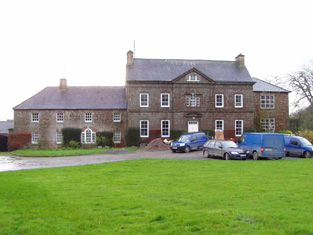
|
| Convamore Upper | J. Delany was the proprietor of Upper Convamore in 1837. George Crofts occupied the house in the early 1850s. He held it from the Reverend G. Atkins Collins and it was valued at £16. The property was later bought by the Reverend Maurice Collis who sold it to the Earl of Listowel. Unoccupied for much of the 20th century it was demolished in 2000. | |
| Convamore | This property was sold by the Bailey family to the Hares in the late 18th century. William Hare, 1st Earl of Listowel, built a new house beside the River Blackwater in the early 19th century. He was residing at Convamore in 1814. At the time of Griffith's Valuation the buildings were valued at £100 and the property was held by the Earl from the representatives of D. Callaghan. Callaghan's interest was advertised for sale in July 1853. It was still the Earl's seat in 1894. The house was burnt during the War of Independence in 1921 and is now a ruin. |

|
| Carrig Park | This early 18th century house was the residence of William Causabon in 1744. By the 1770s it was the seat of a branch of the Franks family, who continued to reside there until the beginning of the 20th century. The house was held by William Hume Franks in fee at the time of Griffith's Valuation when the buildings were valued at £45 but the valuation was reduced to £35.10 shillings by 1906. The house was burnt in the early 1920s and later demolished. |

|
| Carrigoon | Occupied by Timothy Collins in the early 1850s and held from Joseph C. Nagle. The buildings were valued at £13. In 1942 the Irish Tourist Association survey noted its association with David Nagle who was MP for Mallow in 1689. The survey mentioned the survival at that time of the stables and coach house. A small ruined portion of this property remains, in an area where extensive quarrying has taken place. | |
| Mount Nagle | An early Nagle home which by the mid 18th century appears to have become the residence of the Linehan family. Hajba records a Mrs Linehan dying there in 1755 and at the time of Griffith's Valuation Myles Linehan occupied the house. He held it from Reverend William Nash and it was valued at £10. This house is still extant and occupied. | |
| Annesgrove | The original house was occupied by Colonel Richard Aldworth in the latter part of the 18th century which Wilson, writing in 1786, refers to it as the seat of Mr. Groves. However, he mentions that near it were "the neat house and beautiful shrubbery of Richard Aldworth". It was reconstructed in the early 19th century (probably post 1814) by Lieutenant General the Honourable Arthur Grove Annesley. Anne-grove, Castletownroche was occupied by William Connor in 1814 and by General Annesley in 1837. The General's residence was valued at £60 in the early 1850s. In 1894 the seat of F.G. Annesley. This house continued to be the residence of the Grove Annesleys in the 20th century. In 1942 the Irish Tourist Authority survey noted that the estate had been divided "in recent years". Annesgrove is surrounded by famous gardens which are open to the public during the summer, see www.annesgrovegardens.com. |

|
| Hunting Hill | Hunting Hill, a single storey house, in the townland of Ballyhimock is marked on the first Ordnance Survey map. Home of the Dwyer family in the first half of the 19th century it was occupied by Mr William Dwyer in 1814 and by Thomas Dwyer at the time of Griffith's Valuation. Located on the Annesley estate it was valued at £15. Various tenants lived at Hunting Hill in the latter half of the 19th century until it was leased to Edward Vaughan, whose descendants continue to live here throughout the 20th century. A house is still extant at the site. | |
| Ballykeating | A house probably built in the mid 19th century, occupied by John Grove Annesley who held the property from his father General Annesley. It was valued at £14 at the time of Griffith's Valuation. Sold to the Callaghans in the mid 1890s. The Callaghans continued to own the property until the late 1970s. A property much associated with horse racing and hunting. Buildings are still extant at the site. | |
| Lisnagoorneen | Hajba writes that Thomas Franks, a nephew of Thomas Franks of Ballymagooly, occupied this house at the end of the 18th century. He married Margaret Maunsell of Ballybrood, county Limerick. They and their son were murdered by Whiteboys in 1823. A new house was built by George Foster Delaney in the 1830s and he was succeeded by his nephew George Johnson who occupied the house at the time of Griffith's Valuation. It was valued at £17 and held from the representatives of G.B. Lowe. The Johnson remained in possession until the early 20th century leasing the house to Major Mansergh among others. In 1942 the Irish Tourist Association survey noted that the Major had owned a famous horse called Lord Cunningham and that Lisnagoorneen house was then occupied by his nephew. |

|
| Glenanore/Glananore | Part of this house appears to date from the early 18th century. It belonged to the Verling family, whose interest eventually became vested in the Johnson family. The Reverend Richard Purcell was the tenant in the latter part of the 18th century and Wilson refers to it as his seat in 1786. It was occupied in 1814 by Garret Nagle and by the early 1830s the Hoares were resident. At the time of Griffith's Valuation Mrs Mary Anne Hoare was the occupier, holding the property from Noble Johnson. The buildings were valued at £32. Mrs Hoare was the widow of Reverend Thomas Hoare who was a brother of Sir Joseph Wallis Hoare, 3rd Baronet. In 1942 the Irish Tourist Association Survey asserted that the front part had been constructed in the early nineteenth century but that other parts were much older. It was then the residence of E.J. Hoare and it was still occupied by members of the Hoare family in the 1950s but is now demolished. |

|
| Clogher | Originally a Nagle home and then in the possession of Harmer Bond through whom Clogher passed to the Lowes. Occupied by Mrs Eliza Lowe in the early 1850s, held from Garret Nagle and valued at £28. This house was derelict at the end of the 20th century. Through the Nagles Clogher had a connection with Edmund Burke, Lewis states that the estate "once belonged to the celebrated Edmund Burke". | |
| Ballynamona | The Nagles originally inhabited the castle at Ballynamona but later built a house adjoining the castle. Garret Nagle was resident in 1814 and Lewis refers to Ballynamona as the ancient family residence "about to be rebuilt". Garret Nagle occupied a house at Ballynamona valued at £9.15 shillings at the time of Griffith's Valuation which he held from John Furlong. The house is still occupied. | |
| Annakisha | The Nangles appear to have held Annakisha from the end of the 17th century and the house may possibly have dated from this time. Pierce Nagle was resident in 1814 and in 1837 and in the early 1850s held the property in fee. The buildings were valued at £22. Sold by Pierce Nagle to the Hamiltons of Castle Hamilton, county Cavan. Hajba writes that the house was derelict by the beginning of the 20th century and it does not appear on later maps. | |
| Johnsgrove | Originally a Glover family home, by the time of Griffith's Valuation it was occupied by Francis F.P. Holmes and held from Walter Nugent. The buildings were valued at £30. This house is still occupied. |

|
| Castlekevin | Originally a Roche stronghold which was granted to William Thornhill a Cromwellian soldier. It remained the seat of the Thornhill family until the mid 19th century. The old castle was incorporated into a castellated mansion in the 1830s. Lewis writes in 1837 that the ‘present extensive castellated mansion was rebuilt by Mr Thornhill after designs by Mr Flood, in the Elizabethan style’. Sold by the Thornhills in the mid 19th century to the Reeves family in whose possession it remained until the 1930s. Still extant and occupied. |

|
| Killuragh | Built by the Thornhills in the late 18th century and soon afterwards leased to the Linehan family. Cornelius Linihan was resident in 1837 and Ellen Linehan in the early 1850s. She held the property from Edward B. Thornhill, the buildings were valued at £20. A lithograph of this house is included in the sale rental of 1851 but there is not much similarity between it and the present building which is now known as The Glen. |

|
| The Hermitage | Hajba states that this single storey house was built by the Reverend John Bagwell Creagh before 1814. Located on the Creagh estate it was occupied by J. Norcott in 1837 and by Samuel Morton Tuckey in the early 1850s, when the buildings were valued at £15.10 shillings. Later inhabitants included William Stawell. Home of the Broderick family in the 20th century. |
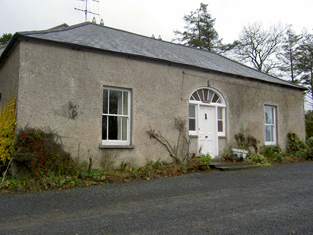
|
| Laurentinum | A mid 18th century house, seat of a junior branch of the Creagh family until the mid 19th century. Wilson refers to Laurentinum as the seat of Mr. Creagh in 1786. At the time of Griffith's Valuation occupied by Stephen Fagan who held it from the representatives of Michael Creagh. The buildings were valued at £32. Later sold to the MacCarthy Morroghs. Home of the Magner family in the 20th century. |
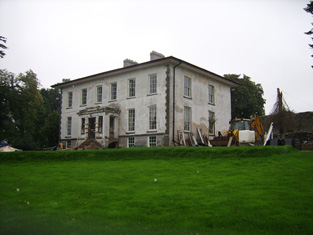
|
| Kilbrack | Hajba writes that this house was built by William Stawell who married Catherine Creagh of Creagh Castle. William was succeeded by his nephew the Reverend Francis Stawell in 1830. Kilbrack remained in Stawell possession until the end of the 19th century. It is still a family home. |

|
| Kilbrack Cottage | Occupied by Michael Creagh in 1814 and by Reverend E.P. Sheehan in 1837. Father Sheehan's representatives were the occupiers at the time of Griffith's Valuation. They held the property valued at £25 from the representatives of Michael Creagh. Kilbrack Cottage is still extant. The National Inventory of Architectural Heritage indicates that it was built c.1760. |

|
| Landscape | This house was held by the Foot family from the Hills by a lease dated 1789 for 3 lives renewable for ever. Occupied by James Hammond in 1837 and in the early 1850s Thomas Bailey was resident holding the property valued at £10.15 shillings from Miss Hill. In the sale rental of 1858 the tenants are given as Margaret and Lucinda Foot. |
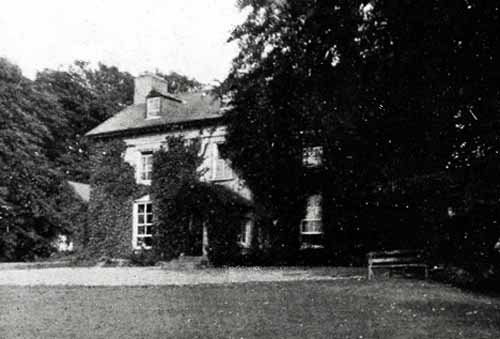
|
| Newtown Park | Built by John Evans, younger brother of Ralph Westropp Evans, in 1847. He is recorded as the occupant at the time of Griffith's Valuation, holding the property from his first cousin, Nicholas Evans. The buildings were valued at £15. The house was later extended by Nicholas Evans. Still extant and occupied. |
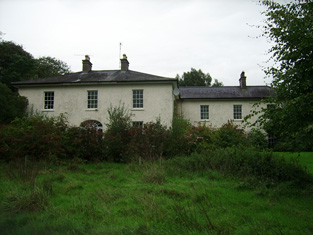
|
| Creagh Castle | Creagh Castle was acquired by Dr John Creagh in the late 18th century and passed to his daughter Mary and her husband, Kilner Brooke Brasier. Their second son, John Brasier-Creagh, inherited Creagh Castle and is credited with building the present house, the original one having been destroyed by a fire. George Washing Brasier Creagh held Castle Creagh in fee at the time of Griffith's Valuation. The buildings were valued at £50. The descendants of John's brother, George Washington Brasier Creagh, continued to live at Creagh Castle until the 1930s. In 1906 the building was valued at £44+ and occupied by Captain John Brazier Creagh. In the 1940s the Irish Tourist Association Survey noted that there was a castle formerly associated with the Coppinger family on this property. |

|
| Crobeg | Home of a branch of the Stawell family throughout the 19th century. The family were involved in the flour milling business at Doneraile. At the time of Griffith's Valuation George Stawell held Crobeg from the representatives of Luke Hassard. The buildings were valued at £36. The house was demolished in the 1980s. |

|
| Cromore | John Creagh leased part of Castlesaffron to Luke Hassard in the late 18th century, who Hajba writes built the house Cromore. Soon afterwards it became the home of the Campion family and Roland Campion was resident at the time of Griffith's Valuation, holding the property from the representives of Luke Hassard. The buildings were valued at £15. Later the home of the Graham family. The building was extensively rebuilt and restored in the 1980s. | |
| Saffron Hill Cottage | Hajba writes that this house was built in the first decade of the 18th century by Reverend Edward Sayers, rector of Templeroan. An Edmund Sayers is recorded as the occupant in the early 1850s. He held the property from Viscount Doneraile. The buildings were valued at £22. The Sayers estate at Croghnacree was advertised for sale in November 1859, November 1864 and May 1865. In 1906 Lord Castletown was recorded as the occupier. This house, an eleven bay single storey building, ceased to be a residence in the mid 20th century but has since been restored and is now inhabited again. Reference to the Sayers family in the Moore sale rental of 27 Feb 1863. This house is also associated with the Brasier Creagh family. |

|
| Ballygriffin | Described by Smith in the mid 18th century as "a pretty seat of Mr David Nagle". This house was the birthplace of Nano Nagle. By 1814 Ballygriffin was occupied by William J. Boyce and in the early 1850s by Ellen Linehan who held the property from J.C. Nagle. The buildings were valued at £6. In 1942 the Irish Tourist Association Survey reported that the building was in ruins but it was restored in the late 20th century and is now known as the Nano Nagle Centre, preserving the heritage of the Presentation Nuns worldwide. |
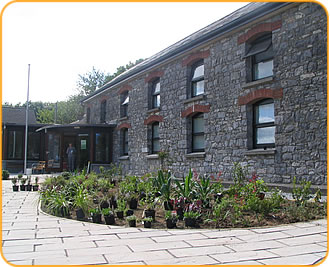
|
| Cottage | James Norcott is recorded as the proprietor of Cottage, Doneraile, in 1814 and J. Norcott MD was resident in 1837. Philip Allen occupied the house in the early 1850s. He held it from Arthur Norcott and the buildings were valued at £20. This house no longers exists. | |
| Sandville | This house valued at £13 was occupied by Mary Sullivan and held from - Roberts at the time of Griffith's Valuation. Hajba writes that it was occupied by Mrs Ellen Punch in 1910. It was bought by the racing trio of Sangster, Pigott and O'Brien in the late 1960s. The house was demolished and the property became a stud farm. | |
| Woodville | Woodville was occupied by the Reverend William Berkley in 1814 and in 1837 by Mrs Gibbons. Anne Gibbings was resident in the 1850s [widow of Bartholomew Gibbings of Gibbings Grove]. She held the property from Martha Jaunsey and the buildings were valued at £17.15 shillings. Her fourth son Robert Gibbings is described as "of Woodville" in Burke's Landed Gentry. A note on the sale rental of 1862 records the purchase of Lot 1 Woodville by Mr Starkey [Dr William Starkey]. The house remained in the possession of the Starkey family until the early 20th century. |
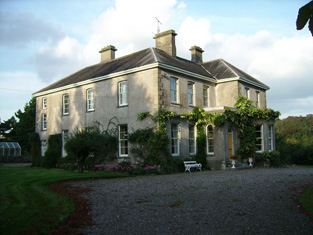
|
| Kilcummer | This would appear to have been a Wilson residence from the late 18th century though Wilson, writing in 1786, refers to it as the seat of "Mr. Groves". . Hajba writes of earlier associations with the Oliver, Cole Bowen and Grove families. Henry Cole Bowen was resident in 1750. At the time of Griffith's Valuation William Wilson was the occupier. He held the property from Benjamin Grubbs and it was valued at £10. In the 1870s William Wilson of Kilcummer owned 182 acres in county Cork. This house is no longer extant. | |
| Renny | This house, overlooking the River Blackwater, may have been part of the Widenham estate which passed to the Smyths. The site had earlier associations with the poet Edmund Spenser. Wilson, writing in 1786, refers to "Rinny, the seat of Mr. Nagle, which was formerly part of the estate of the immortal Spenser". In 1814 the Reverend C.P. Wallis was the occupant. At the time of Griffith's Valuation the house was occupied by Henry Smith who held the property in fee, the buildings were valued at £23. Henry Smyth advertised the house and 541 acres for sale in May 1851, all it required at that time was a "small outlay in paint and paper to make it at once fit for occupation". In 1885 Walford noted Renny as the seat of John Blackburne. Hajba writes that the last occupant was Captain [Pepper] Roberts. The Earl of Listowel demolished the house following the Captain's death in 1900 though many of the buildings shown on the 1st edition Ordnance Survey map had already disappeared by then. | |
| Castle Widenham [Blackwater Castle] | Originally a Roche stronghold, the castle was granted to the Widenhams in the mid 17th century. The castle was altered in both the 18th and 19th centuries. In the early 19th century it passed by marriage to the Brazier Creagh family and again by marriage to the Smyths. At the time of Griffith's Valuation the buildings were valued at £70 and held by Henry M. Smyth from Henry Leader. In 1894 it was the seat of Mrs. Smyth. In 1942 the Irish Tourist Association survey noted that it was still part of the Smyth family estate. Also known as Blackwater Castle, it is still extant. In 2022 it was offered for sale. |
![Photo of Castle Widenham [Blackwater Castle]](https://landedestates.ie/storage/img/orig/1571.jpg)
|
| Gurteen | Home of the Campion family in the first half of the 19th century held from the Earls of Listowel. Luke Campion was resident in 1837 and Lewis writes that it had "been greatly enlarged and improved". Mrs Mary Campion was resident in the early 1850s. The buildings were valued at £13.15 shillings. Later occupants were stewards to the Earl. The house was demolished in the early 20th century. | |
| Eastly Cottage | This house was the home of Mary Anne Lombard in the mid 19th century. She held the property from the Earl of Listowel and it was valued at £20. Hajba writes that the kennels for the Duhallow Foxhounds were later located close to the cottage. Derelict for a number of years the building has been restored and was functioning as a pub in the early 21st century. | |
| Ballyellis | A home of a branch of the Norcott family in the 18th century. William Wrixon is given as the proprietor of Ballyellis, Mallow, in 1814. In 1837 Lewis refers to Bally Ellis as "formerly the residence of Lord Ennismore and now of A. G. Creagh". By the time of Griffith's Valuation Kilner Brazier held the property in fee. The buildings were valued at £60. Sold to Mr McCormick circa late 1870s and then to Nigel Baring of Baring's Bank in the 1890s. Baring was Master of the Duhallow Foxhounds for a time and changed the name of the house to Avondhu. Later bought by the De La Salle Order of Brothers. Sold by them in 1974 and demolished. | |
| Cregg South [Avonmore] | The Phipps "of Cregg" are recorded in "Burke's Irish Family Records" from the early 18th century. By the time of Griffith's Valuation the house in Cregg South valued at £22 was occupied by John Carey who held it from John Phipps. On the 25-inch Ordnance Survey map of the 1890s the house at this site is labelled Avonmore. A house is still extant there. | |
| Templenoe | Hajba writes that this house, on the banks of the River Blackwater, was built in 1761 by the Hydes of Castle Hyde. William Hyde (died 1790) of Templenoe was the son of John Hyde of Creg Castle and grandson of Arthur Hyde of Castle Hyde. He married Catherine Lane. William Lane Hyde was resident in 1837 and at the time of Griffith's Valuation. He held the property valued at £20 from John Phipps. His estate of 584 acres was advertised for sale in July 1850. The present Templenoe House was the residence of the Mounteagles in the latter half of the 20th century. |
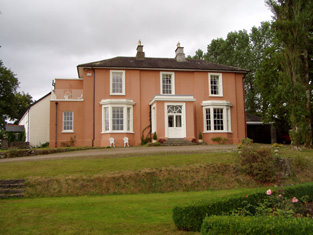
|
| Woodfort | George Massy occupied this house, which he held from the Reverend Samuel Adams, in the early 1850s. It was valued at £20. The home of the Magniers at the beginning of the 21st century. |

|
| Ballyviniter | A Stawell residence in the 18th and 19th centuries, occupied by George C. Stawell in the early 1850s, when the buildings were valued at £15. Stawell held the property in fee. The original house is not extant. | |
| Ballygarrett | Referred to in 1750 by Smith as the house of John Norcott. Leased by Sir James Cotter at the end of the 18th century to Major Stephen Kell. The Major's son, John, was occupying the house in the early 1850s, when it was valued at £18 and held from Adam Newman. Later the property of the Creaghs. This house no longer exists. | |
| Carrigacunna Castle | This house was the residence of Henry Baldwin Foote in the 19th century. Lewis writes that the estates of Monanimy, Ballygriffin & Carrigacunna formerly belonged to the ancient family of Nagle and that Carrigacunna was the residence of Sir Richard Nagle, Private Secretary to James II, who forfeited the estate in the late 17th century. In 1837 it was the property of H. B. Foott. He was the occupier in the early 1850s, the buildings were valued at £34 and the property was held in fee. Hajba writes that Henry's son George Carleton Foott lived at Carrigacunna until 1929. The Humphreys family were living here in the mid 20th century. The Irish Tourist Association Survey noted in the 1940s that Major Humphreys was residing in "a handsome modern mansions, adjoining the ruins of the old castle". The house was restored in the late 20th century. |

|
| Ballymagooly | The home of the Franks family in the mid 18th century. John Nash was living here in the late 18th century. In 1790 his daughter Catherine married Robert Courtenay of Ballyedmond and the property passed to the Courtneys. Ballymagooly was occupied by the Courtneys in 1814 and in 1837. Held by John Courtney in fee at the time of Griffith's Valuation when the buildings were valued at £35. Also known as The Garrison the house was burnt and the stableblock converted into a residence in 1955. |

|
| Carrigoon Cottage | A house valued at £12 and located on the Franks estate in the mid 19th century when it was occupied by William Quane and held from William H. Franks. Buildings are still extant at the site. | |
| Carrigoon House | A Stawell home in 1750 and the home of Michael Nash in the latter part of the 18th century. Occupied by James Curtin in 1814 and by William H. Franks at the time of Griffith's Valuation. It was held by Franks in fee and valued at £15. A few ruins remain of this house. | |
| Rockforest Lodge | This house was the residence of Pierse Creagh in 1837. At the time of Griffith's Valuation Henry O. Seavers occupied this house, valued at £24 and held by him in fee. This house is still inhabited. In 2010 it was offered for sale. see http://www.michaelhdaniels.com/index.cfm?fuseaction=propsearch |

|
| Rockforest | The seat of the Cotter family from the mid 18th century and occupied by them until the 20th century. Wilson, writing in 1786, describes it as "a most beautiful improvment, highly wooded, situated on the Blackwater, the seat of James Laurence Cotter". Occupied by Mrs J.R. Cotter, sister-in-law of the 3rd Baronet, in the mid 19th century when the buildings were valued at £18. By 1906 its value had risen to £38.15 shillings. Only half of the house now survives, the Irish Tourist Association Survey of 1942 noting that "the greater part of the building had been knocked down". For sale in 2012 through Savills. |
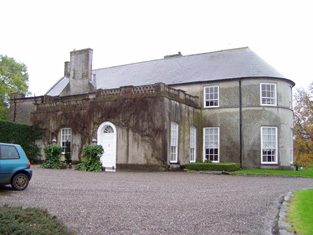
|
| Ballymacmoy | The Hennessys were settled at Ballymacmoy from the mid 18th century. In 1786 Wilson refers to "Ballymacboy" as the seat of Mr. Hennessy. A new house was built circa 1820s. By the time of Griffith's Valuation the Hennessy home was valued at £13.5 shillings and was held in fee by James Hennessy. He also owned a flour mill valued at £70 which he leased to Henry B. Foote. This house was still a Hennessy home in the 20th century and the house is still extant. |
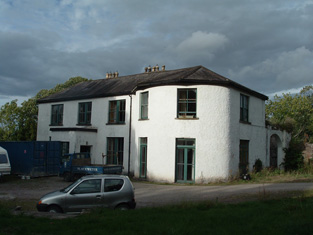
|
| Rockmills Lodge [Rockmills House] | The lodge was the residence of Colonel Richard Aldworth in 1814. Hajba writes that it was built as a shooting and fishing lodge by Colonel Richard Aldworth in 1776 and that he left the property including the mills to his wife's nephew, Charles Deane Oliver (grandson of Robert Oliver of Cloghanodfoy). Occupied by Mrs Sarah Oliver in 1837 and at the time of Griffith's Valuation and held by her from the representatives of Bond Lowe. The buildings were valued at £25 and she was leasing a flour mill and other buildings valued at £170 to P.L. Lyster. This property was advertised for sale in June 1856. The house was burnt in May 1921 during the War of Independence when it was the residence of Charles Deane Oliver. In 1942 the Irish Tourist Association Survey noted that it had been rebuilt by the Walsh family and was then (1942) occupied by the Casey family. It is still extant. The mills are now in ruins. |
![Photo of Rockmills Lodge [Rockmills House]](https://landedestates.ie/storage/img/orig/1591.jpg)
|
| Oldtown House (Fermoy) | William Creagh of Oldtown married Sarah Nagle of Annakissy in the 1770s. The Creaghs were succeeded at Oldtown by the Evans family. Rear Admiral Henry Evans was the occupier in 1837. Oldtown was the residence of Nicholas Evans in the early 1850s. Valued at £29 it was held from Pierce Nagle. Later occupied by the Campion and Roberts families. Oldtown is still extant. |
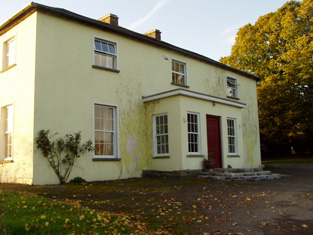
|
| Ballywalter | The seat of the Welstead family valued at £45 in the early 1850s and held in fee. The original house was replaced by an early 19th century building. It was still valued at £45 in 1906 and occupied by S.Q.W. Penrose. It was burnt in May 1921 during the War of Independence and later rebuilt. It is still a family residence. |

|
| Shanballymore | The seat of a branch of the Roberts family, Hodder Roberts was resident in 1814 and Watkins Roberts in 1837. The residence of John Roberts in the early 1850s, held from William W.M. Hodder and valued at £23. The property remained in Roberts possession until 1884 when it was sold to the O'Keeffe family who still reside there. |

|
| Monanimy Castle | In the mid 19th century William Barry occupied Monanimy Castle which was valued at £15.10 shilllings and held from George Bennett. Hajba writes that Barry restored the castle and that he was related to the Nagles who had originally owned the castle. The Barrys remained as residents of the castle until the 1940s when the castle was damaged by a fire. It has been restored and is now a family home. | |
| Dannanstown | A house built beside a large mill by John Furlong circa mid 19th century. At the time of Griffith's Valuation occupied by John Furlong who held it and the large flour mill and offices from Richard Welstead. The buildings were valued at £135. Later owned by Humphrey Smith and Robert Hobson. |
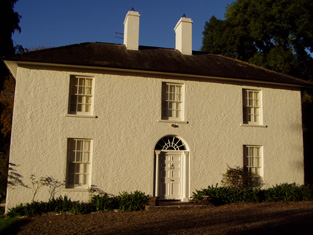
|
| Rocksavage | This house was not built at the time of the first edition Ordnance Survey circa 1840. Built for John Craven Mansergh [in the 1850s] on land that formerly belonged to the Martin family. In 1942 the Irish Tourist Association Survey reported that Rocksavage was the residence of Dr. Foley. This house, situated close to the Awbeg River just south of Castletownroche, is still extant. | |
| Wallstown Castle | The castle was originally in the hands of the Wall family. In the late 17th century it passed into the possession of the Ruddocks and then through marriage to the Creaghs and Stawells. In 1836 it was leased to Thomas Baily and was held by Charles Bailey from Thomas Bailey at the time of Griffith's Valuation, valued at £7.18 shillings. The property was purchased by John McCormick of Dublin in 1858. The battlements were added to the building circa 1860. See www.corkpastandpresent.ie. In the 1940s the Irish Tourist Association reported that it had been purchased in the 1920s by a Mr Crowley who "lives in a grand mansion near the ruin of the old castle", |
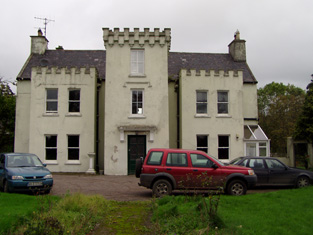
|
| Dromrahan | A mansion house valued at £20 is recorded at Dromrahan in 1906. Matthew H. Franks was the occupier. This house was built in the second half of the 19th century and is not recorded in Griffith's Valuation. A large complex of buildings at the site is labelled Dromrahan House on the 25-inch Ordnance Survey map of the 1890s. It is still extant and occupied. |
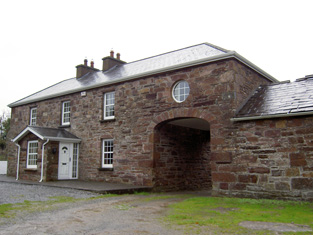
|
| Rockvale (Castletownroche) | At the time of Griffith's Valuation, Leslie O'Callaghan was leasing this property from Eustace estate when it had a valuation of £8. In 1942 the Irish Tourist Association survey noted that the ruins of what had been a Nagle property were still visible to the rear of Rockvale. The Survey also recorded that Leslie O'Callaghan, who "had lived there about 100 years ago" had been killed in Cork and that the property had come into the ownership of the Annesley estate. It was later sold to the Patterson family and the house is still extant. |
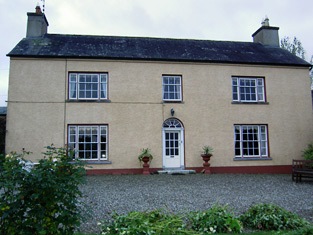
|

